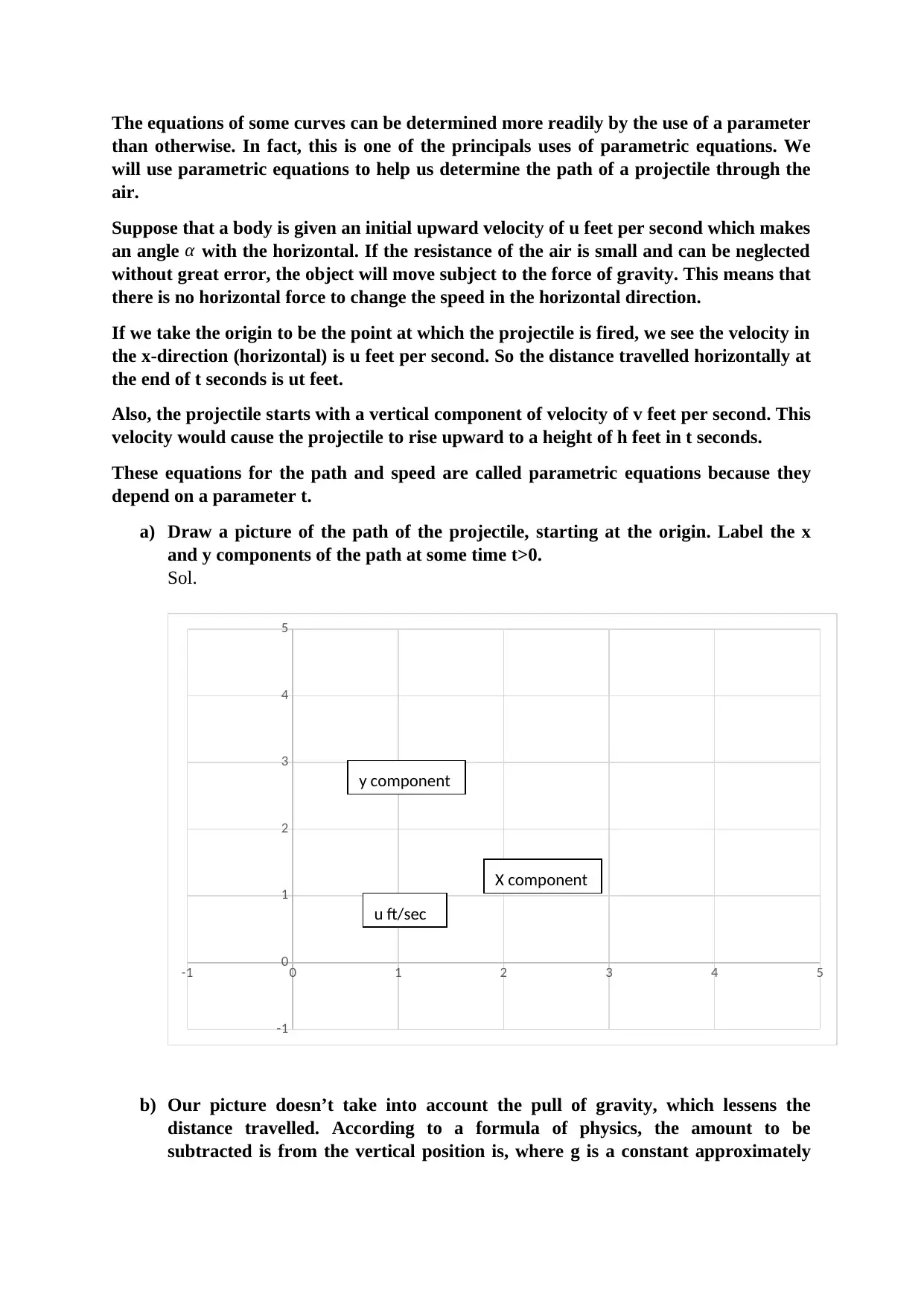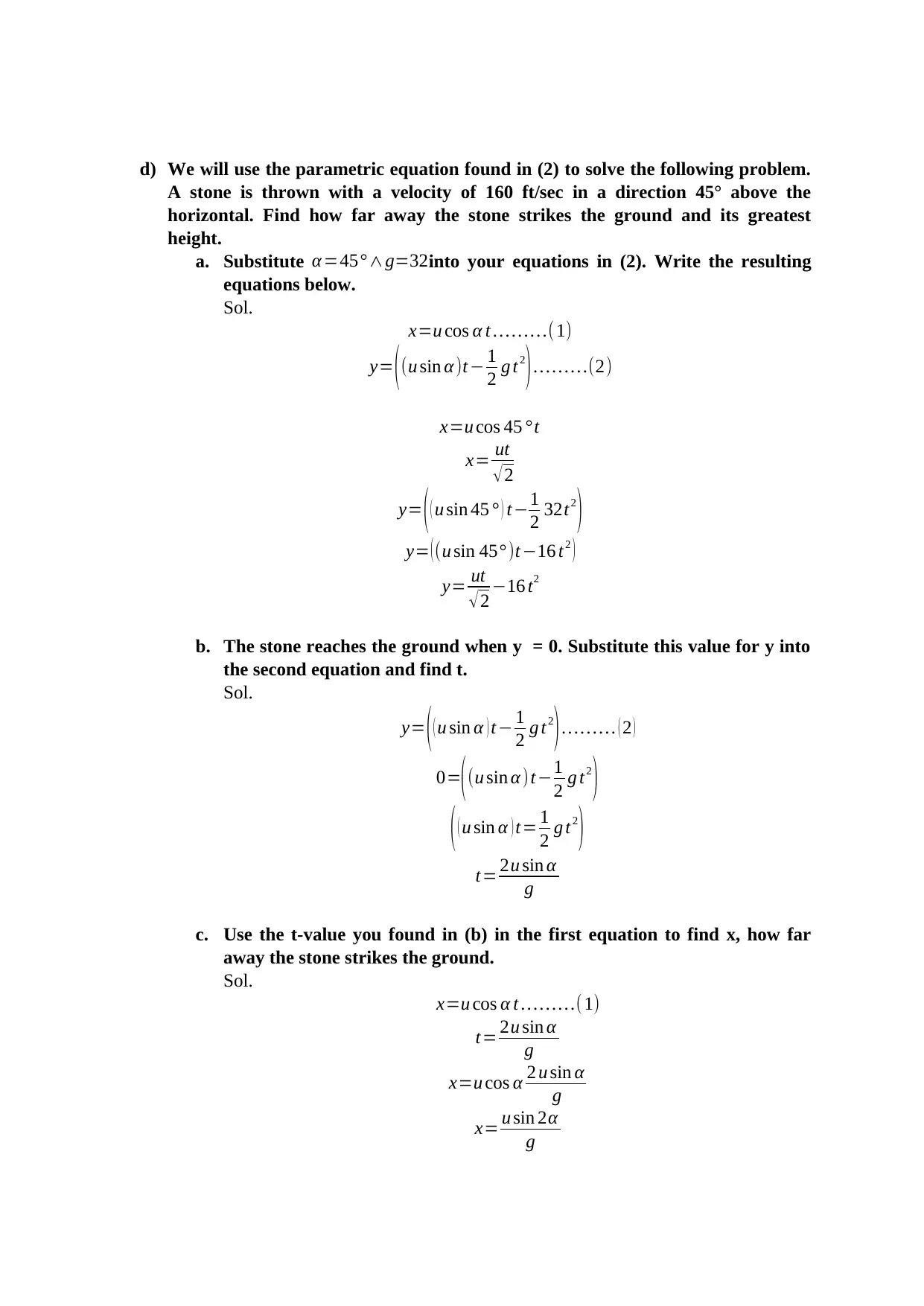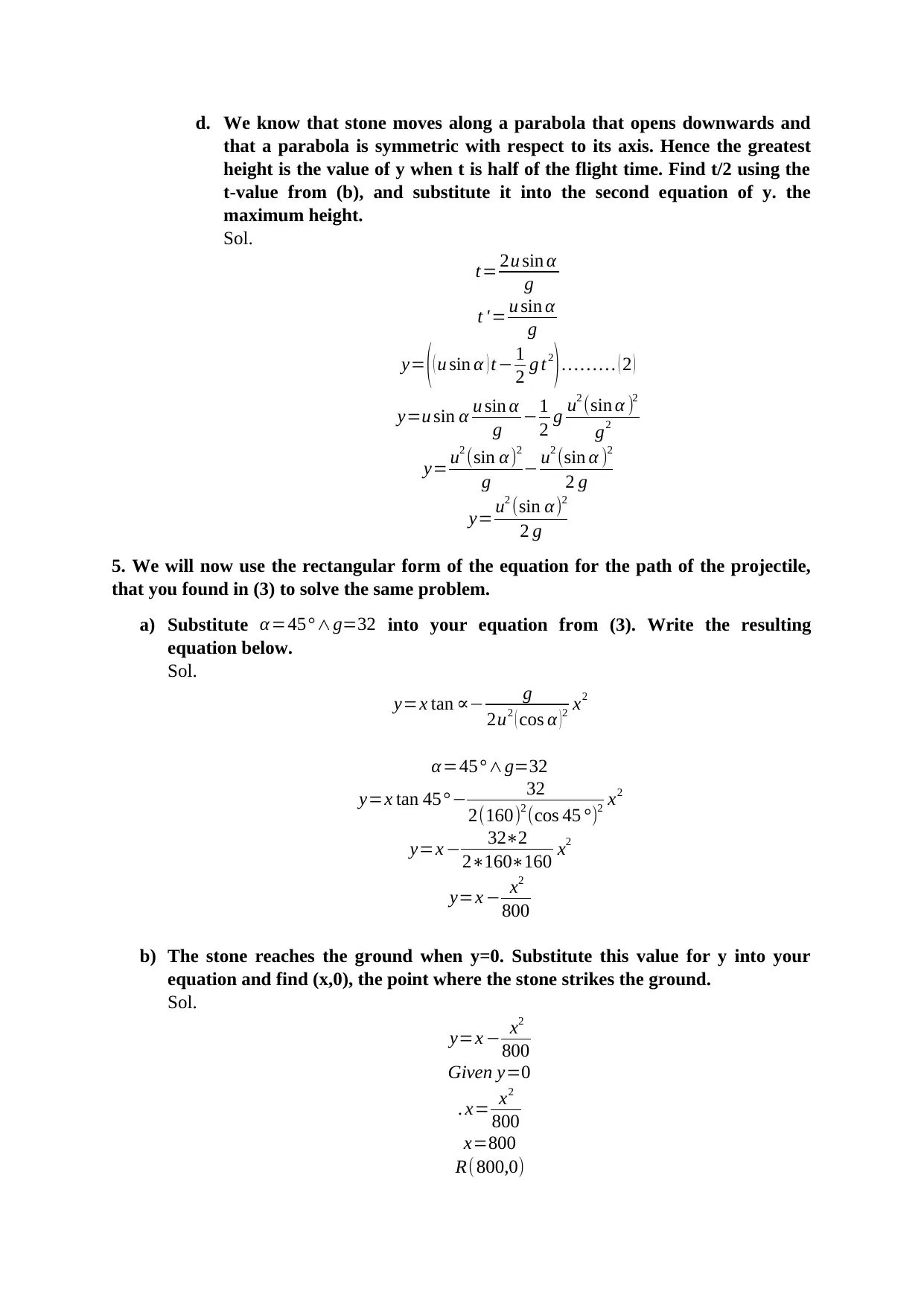Equations of Projectile Motion
VerifiedAdded on 2023/01/19
|6
|1183
|91
AI Summary
This study material explains the parametric equations and rectangular form of the path of a projectile. It covers the calculations for distance and maximum height of a projectile using these equations. The subject is Mathematics (MTH-1) and the document type is Project - II.
Contribute Materials
Your contribution can guide someone’s learning journey. Share your
documents today.
1 out of 6












![[object Object]](/_next/static/media/star-bottom.7253800d.svg)